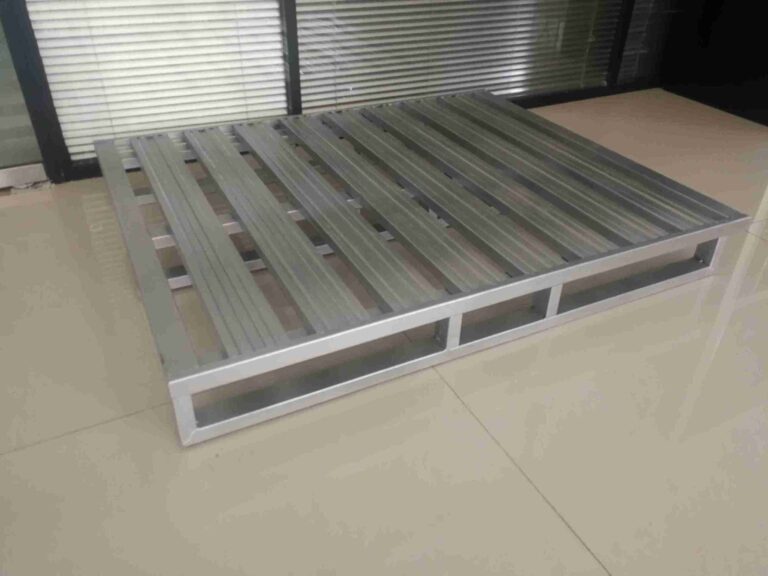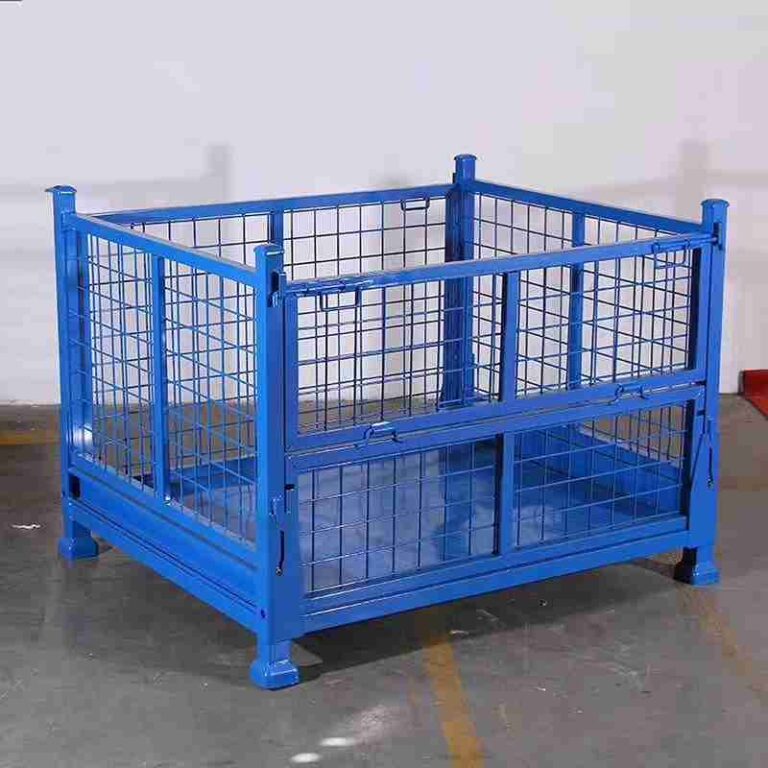📐 "First 50 Enterprise Queries Get Custom 3D Warehouse Design" Plan

When it comes to optimizing warehouse storage, one factor stands out as pivotal to achieving greater efficiency: pallet size. The importance of selecting the right pallet size cannot be overstated, as it directly impacts storage capacity, workflow, and overall operational costs. A thoughtful approach to pallet size selection ensures that warehouse space is utilized to its fullest potential, minimizes wasted space, and promotes smoother operations. This article will explore how pallet size influences warehouse capacity, along with practical tips for selecting the most appropriate dimensions based on specific needs and constraints.

H1: Why Pallet Size Is Crucial for Warehouse Optimization
In a warehouse, the choice of pallet size significantly affects storage efficiency, material handling, and the overall speed of operations. When a warehouse is not utilizing the best possible pallet size, inefficiencies can arise. Properly selected pallet sizes improve the flow of goods, reduce handling times, and help to maintain the desired balance between storage density and accessibility.
H2: The Relationship Between Pallet Size and Storage Density
Pallet size is closely tied to storage density in a warehouse. The optimal pallet size maximizes storage space by enabling higher stacking and more compact placement within racking systems. Conversely, an incorrectly sized pallet can result in gaps between stacked pallets, leading to inefficient use of space. This is particularly critical when storage systems such as selective racking or push-back racking are in use, as the size and arrangement of pallets can make or break the system’s overall capacity.
H3: Storage Density and Efficiency
Efficient use of storage space requires a clear understanding of how different pallet sizes fit into the available racking configuration. A larger pallet may take up more space than necessary, while a smaller pallet may not fully utilize the racking’s potential capacity. Therefore, choosing the right pallet size directly influences the volume of goods that can be stored in a given space, which in turn impacts both warehouse capacity and operational costs.
H3: How Pallet Size Affects Forklift Operations
Another important aspect of pallet size is how it affects forklift operations. When pallets are too large or too small for the equipment, forklifts and automated systems such as AGVs (Automated Guided Vehicles) may have difficulty navigating the warehouse. This leads to longer handling times, delays, and even potential damage to goods or equipment. To avoid these issues, warehouse managers should select pallet sizes that are compatible with their handling equipment, ensuring smooth operations and safety.
H2: Choosing the Correct Pallet Size Based on Your Products
Different types of products require different pallet sizes. In fact, the shape and size of the product often dictate the appropriate pallet size. It’s crucial to consider the following when choosing the right pallet size for specific products:
H3: Small vs. Large Products
Smaller products typically require pallets that are proportional in size to their dimensions. Oversized pallets can leave a lot of unused space, reducing storage efficiency. Larger products, on the other hand, may need larger pallets to ensure that the goods are securely stored and easy to transport. The key is to find the balance between the pallet size and the size of the product, ensuring maximum storage density without sacrificing ease of access.
H3: Irregularly Shaped Products
For irregularly shaped products, custom pallet sizes are often required. A custom pallet size can be designed to accommodate unusual dimensions, ensuring that the product remains stable during handling and storage. While custom pallets are typically more expensive, the cost is often offset by the increased storage efficiency and reduced risk of damage to the products.
H2: The Financial Implications of Choosing the Right Pallet Size
While the initial cost of selecting a pallet size may seem straightforward, the long-term financial implications are far-reaching. Selecting the right pallet size can lead to significant cost savings across various areas of warehouse operations.
H3: Reducing Storage and Handling Costs
The right pallet size reduces the need for additional storage space, which translates directly into lower warehouse rent and operational costs. By optimizing space, you also minimize handling times, which lowers labor costs. Additionally, ensuring that pallets are appropriately sized for both warehouse racks and forklifts helps to avoid damage, reducing repair and replacement costs.
H3: Improving Transportation Efficiency
Pallet size also plays a significant role in transportation efficiency. The wrong pallet size can result in underutilized shipping containers or trucks, leading to higher transportation costs. Standardizing pallet sizes ensures that goods can be efficiently loaded into containers, maximizing available shipping space. Whether goods are transported by truck, rail, or sea, choosing the correct pallet size can significantly reduce transportation expenses.
H2: Pallet Sizes and Warehouse Racking Systems
Warehouse racking systems and pallet sizes are intrinsically linked. The design of the racking system often dictates the types of pallet sizes that can be used. Let’s explore how different racking systems and pallet sizes work together to optimize storage.
H3: Selective Racking and Pallet Sizes
Selective racking is one of the most common warehouse racking systems. It is designed to store pallets that are easily accessible, making it essential to choose the right pallet size to ensure maximum storage capacity. Larger pallets may fit into a selective racking system, but if they don’t make full use of the available space, efficiency can be compromised.
H3: Push-Back and Pallet Size Considerations
Push-back racking systems allow for high-density storage by utilizing a pallet size that fits neatly within the system’s dimensions. In such systems, selecting a pallet that perfectly matches the racking system ensures that space is used efficiently and that goods can be quickly accessed.
H3: Drive-In and Drive-Through Systems
In drive-in and drive-through racking systems, pallets are stored in a manner that maximizes vertical space. These systems require precise pallet size selection to ensure safe loading and unloading. If the pallet size doesn’t match the racking system’s design, it can cause issues such as blocked access or damaged pallets.
H2: The Importance of Standard vs. Custom Pallet Sizes
While standard pallet sizes are widely used, there are cases where custom pallet sizes are necessary. Let’s look at the pros and cons of both options.
H3: Benefits of Standard Pallet Sizes
Standard pallet sizes offer numerous advantages, including lower upfront costs, easier inventory management, and compatibility with most racking systems and handling equipment. Standard pallets are versatile and widely accepted across industries, making them a cost-effective option for many warehouses.
H3: When to Consider Custom Pallets
Custom pallet sizes are often the best choice for warehouses that store products with unique shapes or sizes. While custom pallets may come at a higher initial cost, the increased storage efficiency and the ability to store products securely can ultimately provide a significant return on investment.
H2: The Future of Pallet Sizes in Automated Warehouses
As automation continues to reshape warehouse operations, pallet sizes may evolve to accommodate the needs of new technologies. With the rise of automated guided vehicles (AGVs) and robotic systems, the future of pallet dimensions will likely lean toward customization to ensure compatibility with automated handling systems.
H3: Customization for Automation
To fully benefit from automated systems, warehouses will need to select pallet sizes that align with robotic systems’ design specifications. As robotic systems become more prevalent, the demand for custom pallet sizes will grow, enabling warehouses to optimize both storage space and handling efficiency.
Conclusion
In conclusion, choosing the right pallet size is one of the most important decisions warehouse managers will make. Proper pallet selection can dramatically improve warehouse efficiency, reduce operational costs, and increase overall storage capacity. Whether using standard pallets or opting for custom pallet sizes, the key is to match pallet dimensions with the specific needs of the warehouse, products, and handling systems. By investing in the right pallet sizes, warehouses can optimize their operations, reduce inefficiencies, and ultimately drive business success.
Frequently Asked Questions
1. How do I determine the right pallet size for my warehouse?
The right pallet size depends on factors like product dimensions, available racking systems, and the type of handling equipment used. Analyzing these elements will help ensure that the selected pallet size maximizes storage capacity and operational efficiency.
2. Can I use custom pallets for better space utilization?
Yes, custom pallet sizes are ideal for warehouses dealing with products that do not fit well on standard pallets. Custom pallets can be designed to optimize space and improve storage density.
3. What are the most common pallet sizes used in warehouses?
The most common pallet sizes are 48” x 40” (1200mm x 1000mm), 1200mm x 800mm, and 42” x 42”, depending on the region and product type.
4. How does pallet size affect warehouse efficiency?
The right pallet size ensures that storage space is maximized, handling times are reduced, and inventory management is simplified, leading to higher warehouse efficiency.
5. How will automated systems affect pallet size selection?
Automated systems, such as AGVs and robotic systems, require precise pallet dimensions to operate efficiently. As automation continues to advance, the demand for custom pallet sizes that are compatible with these systems will increase.
Welcome to contact us, if you need warehouse rack CAD drawings. We can provide you with warehouse rack planning and design for free. Our email address is: jili@geelyracks.com




